Are you an adventure enthusiast seeking a thrilling journey amidst the towering peaks of the Himalayas? Look no further than the Kedarnath Trek, an expedition that offers breathtaking landscapes, spiritual encounters, and a taste of nature’s grandeur. In this comprehensive guide, we’ll take you through the ins and outs of this incredible trekking experience.
Introduction to the Kedarnath Trek
Nestled in the Garhwal region of Uttarakhand, India, the Kedarnath Trek is a revered pilgrimage and an adventure seeker’s paradise. The trek takes you to the sacred Kedarnath Temple, dedicated to Lord Shiva, situated at an elevation of 3,583 meters above sea level. The journey is not just about conquering heights; it’s a spiritual quest that connects you with nature’s raw beauty and ancient legends.
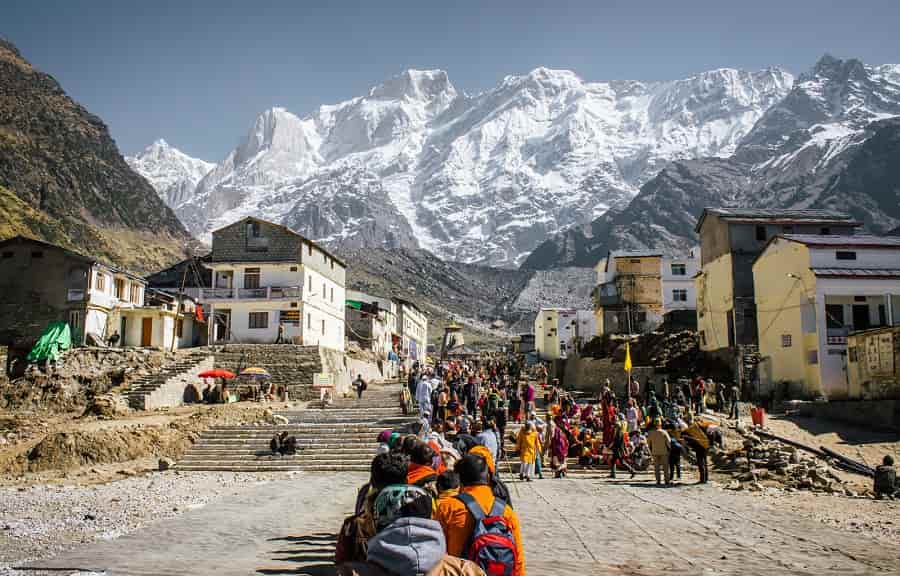
Preparation and Essentials for the Trek
Before embarking on this memorable journey, meticulous planning is key. Ensure you have sturdy trekking gear, including comfortable clothing, sturdy hiking shoes, a durable backpack, and other essentials such as water bottles, energy snacks, a first aid kit, and a map. Acclimatization is vital, so engage in light exercises a few weeks prior and stay hydrated.
Best Time to Visit
The ideal time for the Kedarnath Trek is during the months of May to June and September to October. The weather during these periods is relatively mild, offering clear skies and pleasant temperatures. Monsoon season is best avoided due to the risk of landslides and slippery trails.
How to Reach Kedarnath
To reach Kedarnath, one of the most revered pilgrimage sites in India located in the state of Uttarakhand, you can follow these steps:
- Reach Haridwar or Rishikesh: Most journeys to Kedarnath start from either Haridwar or Rishikesh. These towns are well-connected by road and rail to major cities in India.
- By Road: From Haridwar or Rishikesh, you can hire a taxi or take a bus to Gaurikund, the base camp for the Kedarnath trek. The distance is around 200-220 km and the journey takes about 8-10 hours.
- By Helicopter (Optional): If you prefer a quicker and more convenient option, you can take a helicopter ride from Phata, Guptkashi, or Sersi to Kedarnath. This significantly reduces the travel time, but bookings need to be made in advance.
- Trek to Kedarnath: The main way to reach the temple is by trekking from Gaurikund. The trekking distance is around 16-18 km, and it usually takes about 6-8 hours to complete. The trek route is well-marked and passes through picturesque landscapes. You can also hire mules or ponies to carry your luggage or to assist you in the trek.
- Stay En Route: There are rest stops and accommodations available along the trekking route, such as Rambara and Kedarnath Base Camp. You can choose to stay overnight at these places if you find the trek challenging to complete in a single day.
- Reach Kedarnath: Once you reach Kedarnath, you can visit the famous Kedarnath Temple dedicated to Lord Shiva. The temple is nestled amidst the Himalayas and holds immense religious significance.
- Return Journey: After your visit to the temple, you can retrace your steps back to Gaurikund either by trekking or by availing helicopter services.
Kedarnath Trek Distance
The journey to Kedarnath spans 18 kilometers and commences from Gaurikund, extending all the way to the sacred destination of Kedarnath. This trek underwent modifications following the 2013 flood disaster in Uttarakhand, resulting in the expansion of the previous 14 km route to a new distance of 16 kilometers.
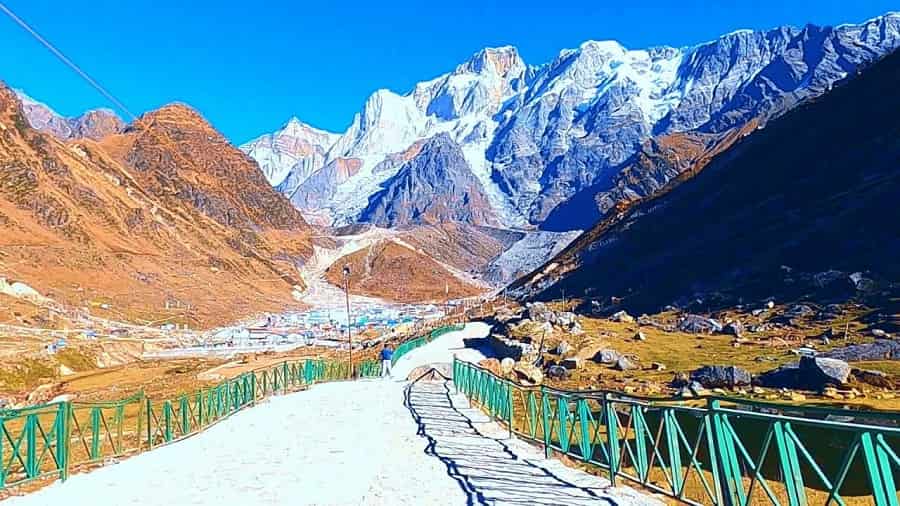
Route Map of the Kedarnath Trek:
- Rishikesh to Sonprayag: The journey usually starts from Rishikesh, where trekkers travel to Sonprayag by road. Sonprayag is the base camp for the Kedarnath Trek.
- Sonprayag to Gaurikund: From Sonprayag, trekkers proceed to Gaurikund, which is around 5 kilometers away. Gaurikund is named after Goddess Parvati and serves as the starting point of the actual trek.
- Gaurikund to Rambara: The trail from Gaurikund leads to Rambara, which is approximately 7 kilometers from Gaurikund. The path offers scenic views of the surrounding mountains and the Mandakini River.
- Rambara to Kedarnath: The journey continues from Rambara to Kedarnath, which is about 6 kilometers away. The route becomes steeper as trekkers ascend towards Kedarnath. The final stretch is known for its breathtaking views but can be challenging due to the altitude gain.
- Kedarnath Temple: At an altitude of around 3,583 meters (11,755 feet), the Kedarnath Temple is one of the holiest Hindu shrines dedicated to Lord Shiva. Pilgrims and trekkers visit the temple to offer prayers and seek blessings.
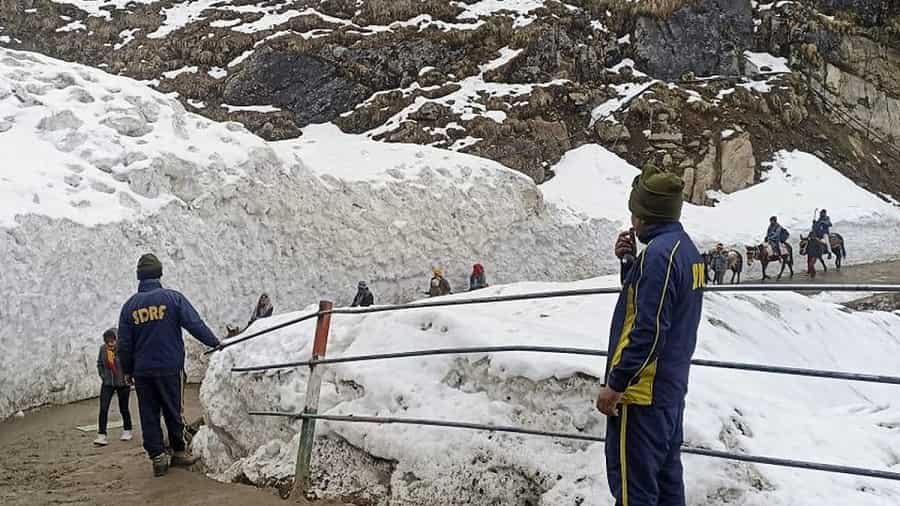
Route Map for Kedarnath Trek
Embarking on the Kedarnath trek, an 18 km journey, is a pilgrimage of both physical and spiritual significance. The expedition commences from Gaurikund, presenting trekkers with an enriching experience in the heart of the Himalayas. The route itself has undergone modifications, a response to the 2013 disaster that wiped away the original path. The new route, outlined below, serves as your comprehensive travel guide for the Kedarnath trek.
1. Gaurikund: To commence this memorable journey, one must first reach Gaurikund. This preliminary step involves a shared taxi ride of approximately 6 km from Sonprayag.
2. Gaurikund to Jungle Chatti: Begin the trek by moving from Gaurikund to Jungle Chatti, a distance of 6 km. This segment involves traversing the Rambara Bridge and immersing oneself in the scenic surroundings.
3. Jungle Chatti to Bheembali: Progress further along the path, covering a distance of 4 km to reach Bheembali. The natural beauty of the region accompanies your trekking endeavor.
4. Bheembali to Linchauli: Continue your journey through the mountainscape, venturing 3 km to arrive at Linchauli. Each step embraces the serenity of the environment.
5. Linchauli to Kedarnath Base Camp: Traverse a distance of 4 km as you approach the Kedarnath Base Camp. The gradual transition in landscape offers trekkers a sense of the grandeur that lies ahead.
6. Kedarnath Base Camp to Kedarnath Temple: The final stretch, spanning 1 km, leads from the Kedarnath Base Camp to the revered Kedarnath Temple. This sacred site, nestled amidst the heights, marks the culmination of your trek and the beginning of a spiritual sojourn.
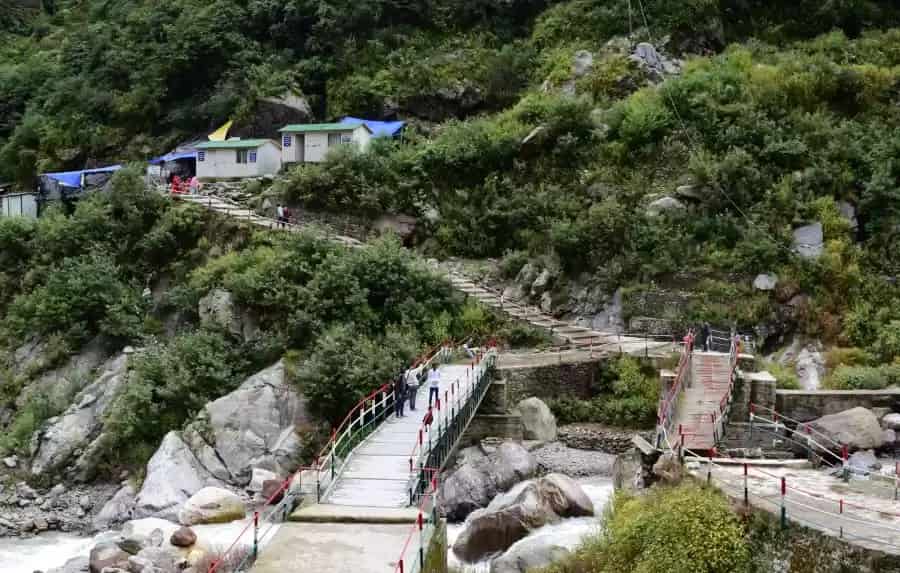
Facilities at the Kedarnath Trek
Facilities at the Kedarnath Trek cater to both trekkers and pilgrims, offering a range of accommodations, including guesthouses and campsites, to rest amidst the Himalayan splendor. Basic medical assistance and first aid services are available to ensure trekker safety, and local vendors provide nourishing meals to refuel weary adventurers. Additionally, experienced guides are on hand to navigate the trail and enhance the overall trekking experience.
Trail Highlights and Scenic Views
The Kedarnath Trail boasts an array of captivating highlights and breathtaking scenic views. Trekking through dense forests, tranquil meadows, and challenging terrains, adventurers are treated to glimpses of the Mandakini River’s sparkling beauty. The trail’s crescendo is the Chandrashila summit, offering panoramic vistas of snow-clad peaks that leave an indelible mark on the heart. Additionally, the Vasuki Tal glacial lake enchants trekkers with its serene turquoise waters against the backdrop of towering mountains.
Camping and Accommodation Options
Kedarnath holds a distinguished position among the revered shrines dedicated to Lord Shiva and is an integral part of Uttarakhand’s Char Dham Yatra. Once teeming with hotels, lodges, and ashrams in locations like Kedarnath, Gaurikund, and Rambara, providing budget-friendly lodging for pilgrims, the landscape underwent a transformation due to the devastating flash floods in 2013, resulting in the obliteration of all accommodations.
Please note that in response to this, entities like NIM and other aiding authorities have constructed a limited number of budget camps and tents within the Kedarnath region. These endeavors aim to expand the range of accommodation choices for tourists. At present, tourists and pilgrims can exclusively avail lodging at GMVN Tents & Camps, offering a secure and reliable place to stay.
Cultural and Spiritual Significance
Apart from its natural beauty, the Kedarnath Trek holds deep spiritual significance. According to Hindu mythology, this region is believed to be the abode of Lord Shiva, making it an essential pilgrimage for devotees. The journey itself becomes a spiritual cleansing, fostering a deep connection with the divine.
Challenges Faced During the Trek
While the Kedarnath Trek is a rewarding adventure, it comes with its share of challenges. The steep ascents and descents on rocky terrains demand physical stamina and mental determination. Acclimatizing to the high altitudes is essential to avoid altitude sickness, which can cause discomfort. The weather can be unpredictable, ranging from sunny skies to sudden rain or snowfall. Navigating through varying landscapes, such as narrow trails and river crossings, requires careful attention. Additionally, the lack of basic amenities along the route and limited mobile network coverage might test your self-sufficiency. Despite these obstacles, conquering the challenges of the Kedarnath Trek yields a sense of accomplishment and an unparalleled connection with nature.
Safety Measures and Health Considerations
Prioritizing safety and health considerations is paramount when embarking on the Kedarnath Trek. Begin by trekking with a certified guide who knows the trail and can navigate challenges. Stay informed about weather forecasts to prepare for changing conditions. Acclimatize gradually to prevent altitude sickness – stay hydrated, avoid alcohol, and ascend slowly. Carry essential medications and a well-stocked first aid kit. Respect the environment by following the “Leave No Trace” principle, ensuring the trail remains pristine for future trekkers. Finally, communicate your itinerary to someone and stay connected, as mobile network coverage can be limited in certain areas. By adhering to these safety measures, you can enjoy a secure and fulfilling trekking experience.
Packing Tips for the Trek
When preparing for the Kedarnath Trek, strategic packing can make your journey smoother and more enjoyable. Prioritize essentials like sturdy hiking boots for rocky terrains, moisture-wicking clothing to handle varying weather, and a waterproof jacket to combat unexpected rain. Don’t forget to pack a reliable backpack with adjustable straps for comfortable carrying, along with essentials like a first aid kit, energy-packed snacks, a reusable water bottle, and a compact sleeping bag. Trekking poles can provide stability, especially on steep ascents and descents. Lastly, a fully charged camera, sun protection, and a hat are crucial for capturing memories and shielding yourself from the elements.
Exploring Nearby Attractions
While embarking on the Kedarnath Trek, the adventure extends beyond the trail itself, offering the opportunity to explore nearby attractions that add depth to your journey. After paying homage at the revered Kedarnath Temple, consider extending your exploration to destinations like Badrinath, a significant pilgrimage site renowned for its temple dedicated to Lord Vishnu. Rudraprayag, where the Alaknanda and Mandakini rivers confluence, offers a serene atmosphere and a chance to connect with nature. Chopta, known as the “Mini Switzerland of India,” beckons with its captivating meadows and breathtaking views of the Himalayan peaks. These nearby attractions enhance your overall experience, painting a richer picture of the region’s cultural and natural diversity.
Capturing Memories: Photography Tips
As you embark on the Kedarnath Trek, don’t miss the chance to capture the awe-inspiring landscapes through your lens. To truly encapsulate the beauty of the journey, embrace natural lighting – early mornings and golden hours before sunset offer magical illumination. Experiment with different angles to showcase the vastness of the Himalayas, the serenity of the meadows, and the intricacies of the trails. Focus on details like vibrant wildflowers, flowing streams, and rugged terrains to convey the trek’s diversity. Additionally, consider using people in your shots to provide a sense of scale and perspective. Lastly, let the breathtaking views inspire you; tell a story through your photos and immortalize the memories created during this remarkable expedition.
Trekking Solo vs. Group Trek
When considering the Kedarnath Trek, the choice between embarking solo or joining a group trek comes down to personal preferences and desired experiences. Trekking solo offers introspection and a unique connection with nature, allowing you to set your own pace and relish the solitude. It’s a chance for self-discovery and embracing the trail at your own rhythm. On the other hand, a group trek infuses camaraderie and shared memories. It’s an avenue for forming bonds with fellow trekkers, exchanging stories, and enjoying collective triumphs. Group treks often offer organized logistics, easing the burden of planning and navigation. Ultimately, whether solo or in a group, the Kedarnath Trek promises transformative moments and breathtaking vistas, tailored to your chosen path.
Important Points to Keep in Mind Before Going Kedarnath Trek
Embarking on the Kedarnath Trek is an exciting adventure, but thorough preparation is key to ensure a safe and enjoyable experience. Here are important considerations before you begin your journey:
- Physical Readiness: The Kedarnath Trek involves challenging terrain and high altitudes. Make sure you’re physically fit and ready for the demands of the journey. Regular exercise and cardiovascular training can help build stamina.
- Weather Readiness: Weather conditions can change rapidly in the mountains. Pack clothing suitable for both warm and cold weather. Don’t forget rain gear to stay dry during unexpected rain showers.
- Footwear Selection: Invest in sturdy, comfortable trekking shoes with proper grip. Well-fitting footwear prevents discomfort and minimizes the risk of injuries.
- Appropriate Clothing: Layer your clothing to adapt to varying temperatures. Bring warm clothing like jackets, gloves, and hats, as temperatures can drop significantly at higher elevations.
- Important Documents: Safeguard your identification, permits, and relevant documents in a waterproof pouch. These might be necessary at different checkpoints during the trek.
- Hydration and Nutrition: Carry an ample supply of water to stay hydrated throughout the trek. Pack energy-rich snacks such as nuts, trail mix, and energy bars to sustain your energy levels.
- Basic First Aid Kit: Prepare a basic first aid kit containing essentials like bandages, antiseptic cream, pain relievers, and any personal medications you require.
- Communication Plans: Although mobile network coverage might be limited, carrying a fully charged power bank is useful. Inform a trusted person about your trekking plans and expected return date.
- Respect for Local Customs: The Kedarnath region holds deep religious significance. Respect local customs, traditions, and sacred sites. Dress modestly and avoid littering.
- Trekking Permits: Check whether you need permits to access the trekking route. Obtain these permits beforehand to prevent any delays.
- Guided Trek or Solo: Decide whether you’ll undertake the trek with a guided group or as a solo traveler. Guided treks offer expertise and logistical support.
- Altitude Adjustment: Allow your body time to acclimatize to higher altitudes. Take breaks, avoid rapid ascents, and pay attention to your body’s signals.
- Environmental Responsibility: Adhere to the Leave No Trace principles. Carry all your waste back with you and help preserve the natural beauty of the environment.
- Emergency Contacts: Keep emergency contact numbers readily accessible. Be aware of nearby medical facilities and rescue services.
- Travel Insurance: Consider obtaining travel insurance that covers potential medical emergencies and trip cancellations.
Conclusion: A Transformative Experience
The Kedarnath Trek transcends the ordinary, offering an unforgettable blend of adventure, spirituality, and natural beauty. As you trek through the breathtaking Himalayan terrain, you’ll find solace, courage, and a renewed sense of wonder. So, gear up for this life-changing expedition and embrace the journey of a lifetime.
FAQs (Frequently Asked Questions)
- Is prior trekking experience necessary for the Kedarnath Trek?
While prior experience is beneficial, beginners with reasonable fitness levels can undertake the trek with proper preparation. - Are there any age restrictions for the trek?
The trek is suitable for individuals in good health. It’s recommended to consult a physician before embarking, especially for senior citizens. - What’s the significance of Kedarnath Temple?
Kedarnath Temple holds immense religious importance for Hindus and is one of the twelve Jyotirlingas of Lord Shiva. - Are there any wildlife concerns during the trek?
While encounters are rare, the region is home to various wildlife species. Trek in groups, make noise, and avoid venturing into dense forests. - Can I undertake the trek during winter?
The trek is not recommended during winter due to heavy snowfall and extreme cold temperatures.


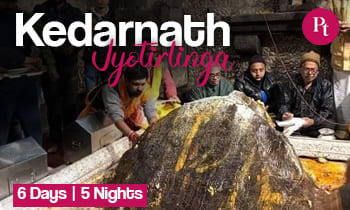
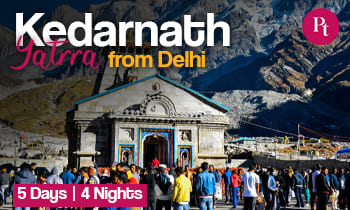


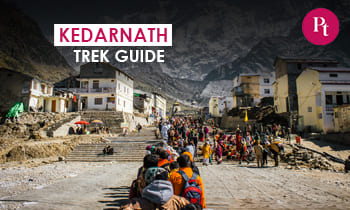
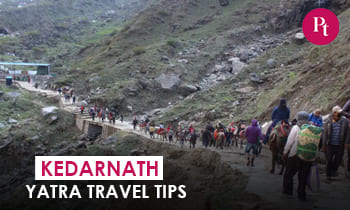
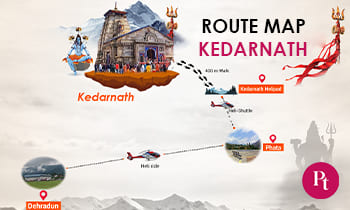
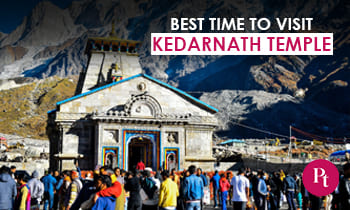
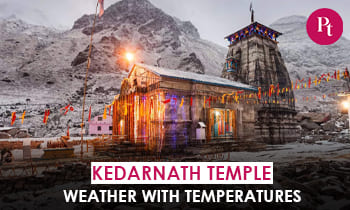
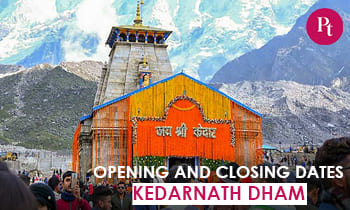

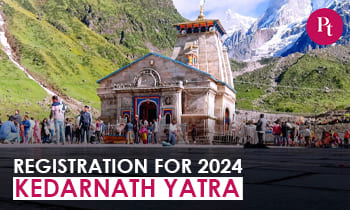

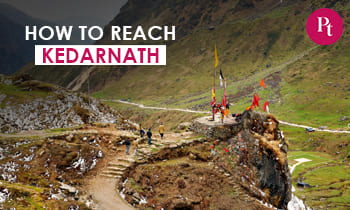
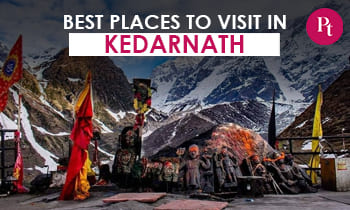
 Call
Call WhatsApp
WhatsApp Enquiry
Enquiry